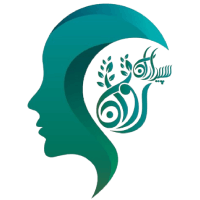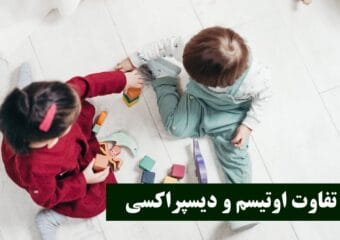
Blog
learning disorder

Learning disorders refer to disorders that affect the way information is processed by the brain. These disorders can impact various aspects of learning, including acquiring and organizing information, retaining and understanding it, and the ability to use the information. Learning disorders can include problems in verbal areas (such as reading and writing) and non-verbal areas (such as mathematical skills), and their severity ranges from mild to severe.
It is important to note that learning disabilities do not affect intelligence and are different from intellectual disabilities. Individuals with LD usually have average or above-average IQ and face challenges only in certain specific learning areas. Learning disabilities are typically diagnosed early in the school years, but some individuals may not become aware of these disorders until adolescence or adulthood.
This article will examine the different types of learning disabilities, their signs and symptoms, and the importance of early identification of these disorders. Our goal is to provide useful information that helps parents, teachers, and professionals better understand the educational and support needs of individuals with learning disorders.
فهرست عناوین
ToggleWhat is a Learning Disability?
Is your child facing challenges at school? Are they fearful of reading aloud, writing essays, or solving math problems?
Learning disabilities are a group of neurodevelopmental disorders that can significantly affect an individual’s ability to learn new information. These disorders may manifest in various areas including speech, reading, writing, attention, information processing, memory, mathematical calculations, and motor coordination.
Individuals with learning disabilities usually have average or above-average intelligence and may have special talents in areas such as science, mathematics, arts, and other fields. However, there may be a gap between their inherent potential and the skills expected from their peers.
Some of the most successful and influential people in history, including Albert Einstein, Leonardo da Vinci, Thomas Edison, and Winston Churchill, had learning disabilities. This shows that learning disabilities do not prevent achieving great success.
The precise definition of a learning disability is:
“A learning disability means a disorder in one or more of the basic psychological processes involved in understanding or using language, spoken or written, which may manifest itself in the ability to listen, speak, read, write, or perform mathematical calculations.”
Learning disabilities are umbrella terms for a set of learning difficulties. These disorders do not indicate weakness in intelligence or motivation, and children with learning disabilities are by no means lazy or inattentive. In fact, many are as intelligent as their peers; however, their brains are wired differently, which affects how they receive and process information.
In summary, children and adults with learning disabilities perceive, hear, and understand information differently. This can cause difficulties in learning new skills and information and using them effectively. The most common types of learning disabilities include problems with reading, writing, mathematics, reasoning, listening, and speaking.
While every child may sometimes struggle with their assignments, if a particular area of learning is consistently challenging, it may be a sign of a learning disability. Early identification of these disorders can lead to the provision of necessary support to help your child learn more effectively.
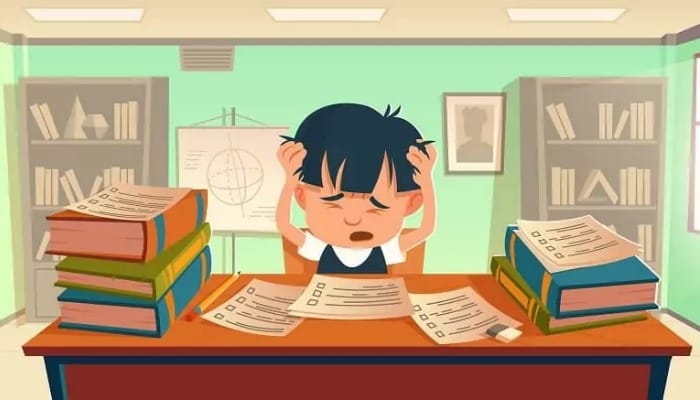
Review of Reading, Writing, and Math Disorders
Learning disabilities refer to a group of disorders that affect children’s academic abilities and learning. These disabilities commonly manifest in various areas including reading, writing, and mathematics and can lead to significant challenges for children and their families.
Learning Disabilities in Reading (Dyslexia)
Learning disabilities in reading are divided into two main categories:
- Basic Reading Problems: This type of disorder occurs when a child has difficulty understanding the relationship between sounds, letters, and words. This can lead to an inability to recognize words and pronounce them correctly.
- Comprehension Problems: This type relates to the inability to understand the meaning of words, phrases, and paragraphs. Children facing this disorder may struggle to correctly analyze concepts.
Suggested article: Childhood Depression
Signs of Reading Difficulties include:
- Difficulty recognizing letters and words
- Problems understanding the meanings of words and ideas
- Slow reading speed
- Weak vocabulary skills

Learning Disabilities in Mathematics (Dyscalculia)
Learning disabilities in mathematics are quite varied and can be influenced by factors such as language impairments, visual problems, or memory disorders. Children with math learning disabilities may face challenges in the following areas:
- Remembering and organizing numbers and mathematical symbols
- Mastering counting principles (such as counting by twos or fives)
- Telling time and performing simple calculations
Learning Disabilities in Writing (Dysgraphia)
Learning disabilities in writing include physical and cognitive difficulties related to the act of writing. These disorders can manifest in two forms:
- Primary Writing Disorder: This type relates to physical difficulties in forming letters and words.
- Expressive Writing Disability: This disorder indicates difficulty organizing thoughts on paper.
Signs of Writing Learning Disabilities include:
- Lack of organization and coherence in writing
- Difficulty accurately copying letters and words
- Inconsistent spelling
- Problems organizing text and maintaining writing coherence
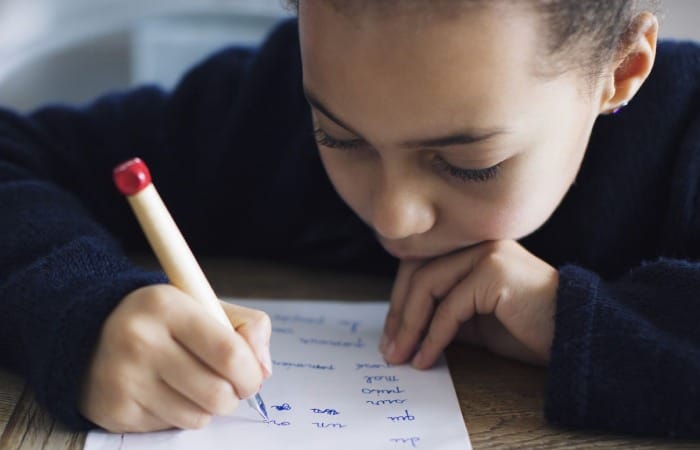
Signs and Symptoms of Learning Disabilities
Signs of learning disabilities vary at different ages. The symptoms mentioned below may be signs of learning disabilities and require precise evaluation and appropriate support. Early identification and educational interventions can help improve the condition of children.
Preschool Age
At this stage, children may face the following challenges:
- Difficulty pronouncing words: difficulty in correctly expressing words.
- Difficulty finding the appropriate word: inability to select suitable words to describe feelings or objects.
- Difficulty with rhymes: inability to recognize or use rhymes.
- Problems learning the alphabet, numbers, colors, shapes, or days of the week: difficulty in identifying and learning these basic concepts.
- Difficulty following instructions or learning routines: inability to follow simple steps or daily routines.
- Difficulty controlling writing tools: such as crayons, pencils, and scissors; also difficulty coloring within the lines.
- Difficulty performing fine motor activities: such as buttoning buttons, zipping zippers, fastening clips, or tying shoelaces.
Ages 5 to 9
At this stage, the following symptoms may be observed:
- Difficulty learning the connection between letters and sounds: inability to recognize and associate letters with their corresponding sounds.
- Unable to blend sounds to form words: difficulty creating words from separate sounds.
- Errors in reading basic words: inability to correctly identify common and basic words.
- Slow in learning new skills: requires more time to learn new skills.
- Repeated mistakes in writing: repeating similar errors when writing words.
- Difficulty learning basic math concepts: inability to understand fundamental math principles.
- Difficulty telling time and remembering sequences: trouble reading clocks and recalling the order of events.
Ages 10 to 13
At this age, the following symptoms may appear:
- Difficulty with reading comprehension or math skills: inability to understand texts read or solve math problems.
- Difficulty with open-ended test questions and word problems: struggling to answer questions that require analytical thinking.
- Aversion to reading and writing: avoiding activities related to reading, especially reading aloud.
- Poor handwriting: lack of clarity and legibility in writing.
- Weak organizational skills: inability to manage spaces and tasks, such as having a messy bedroom or disorganized homework.
- Difficulty following class discussions and expressing thoughts: trouble participating actively and sharing opinions in class.
- Similar spelling mistakes within a single document: repeating similar spelling errors in writing.
Suggested article: ADHD
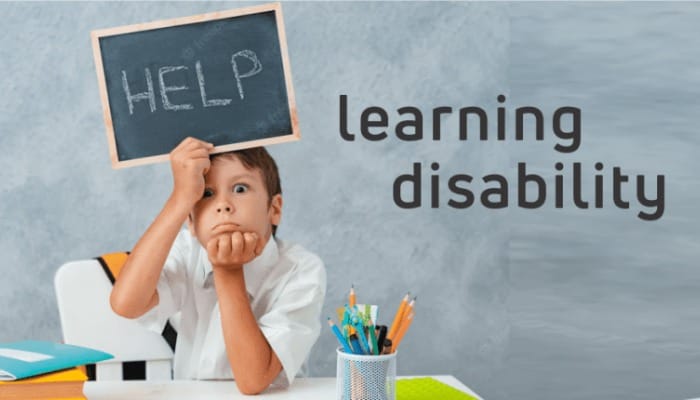
What are the Causes of Learning Disabilities?
- Genetic factors: Research shows that learning disabilities can be influenced by heredity. A family history of learning disabilities may increase the likelihood of these disorders in future generations.
- Biological factors: Changes in brain structure or function, such as neurological abnormalities or imbalances in neurotransmitters, can lead to learning disabilities. For example, studies have shown that individuals with dyscalculia (math learning disability) may have differences in brain activity in specific areas.
- Environmental factors: Environmental conditions such as poor nutrition, exposure to toxins (like lead), or traumatic experiences during childhood can affect brain development and learning abilities.
- Cognitive factors: Difficulties in information processing, poor short-term memory, or problems with attention and concentration can also contribute to learning disabilities. These issues may impact the individual’s ability to receive and process new information.
- Social and cultural factors: Inadequate educational experiences, lack of access to appropriate learning resources, and social pressures can also contribute to the development of learning disabilities.
Prevalence of Learning Disabilities
Learning disabilities are one of the important issues in psychology and education that have significant effects on individuals’ learning processes. Statistics show that the prevalence of these disabilities worldwide ranges between 5% and 15% of the population.
Studies have shown that about 80% of individuals with learning disabilities face specific problems in reading. Additionally, research indicates that these disabilities are more common among boys than girls.
Difference Between Learning Disabilities and Exceptional Children
Learning disabilities and intellectual disabilities are two separate concepts that need to be clearly understood to provide appropriate support to children. Intellectual disabilities, also known as mental retardation, refer to conditions in which an individual has an IQ below average, leading to significant limitations in daily life skills.
In contrast, learning disabilities refer to specific weaknesses in academic skills. These disabilities usually involve problems in reading, writing, and mathematics, while the individual’s general cognitive abilities may be within the normal range. In other words, children with learning disabilities may have average or above-average general intelligence but face serious challenges in specific academic areas.
Therefore, it is essential for parents, teachers, and educational specialists to understand the differences between these two concepts in order to respond effectively to the educational and support needs of children.
Suggested article: Psychology Clinic
Treatment of Learning Disabilities
Learning disabilities in young children may begin at very early ages but are usually not fully identified until the child reaches school age. These disabilities can continue as lifelong conditions. Some individuals may face multiple types of learning disabilities that affect each other, while others may have only one specific problem that does not significantly impact their daily life.
Psychological treatments can be used as part of a comprehensive approach to managing learning disabilities. The most common treatment method for learning disabilities is special education. Specialists in this field typically conduct a formal evaluation to identify the child’s academic and cognitive potential. They also pay attention to the child’s level of academic performance. After the evaluation, the educational approach usually focuses on strengthening learning skills and utilizing the child’s strengths while addressing disabilities and weaknesses.
In addition to psychologists, other specialists such as speech therapists and language experts may also assist in this process. In some cases, medications can help improve the child’s learning by increasing attention and concentration.
Early identification and assessment of learning disabilities can aid in effective interventions. Considering each child’s specific needs, educational programs should be individually tailored to reduce challenges and enhance the child’s abilities. Collaboration among family members, teachers, and specialists is extremely important to achieve the best possible outcomes.
برای مشاوره رایگان و رزرو وقت (یا اگر تماس گرفتید و قادر به پاسخگویی نبودیم) شماره تماس خود را وارد کنید. ما به زودی با شما تماس می گیریم!
